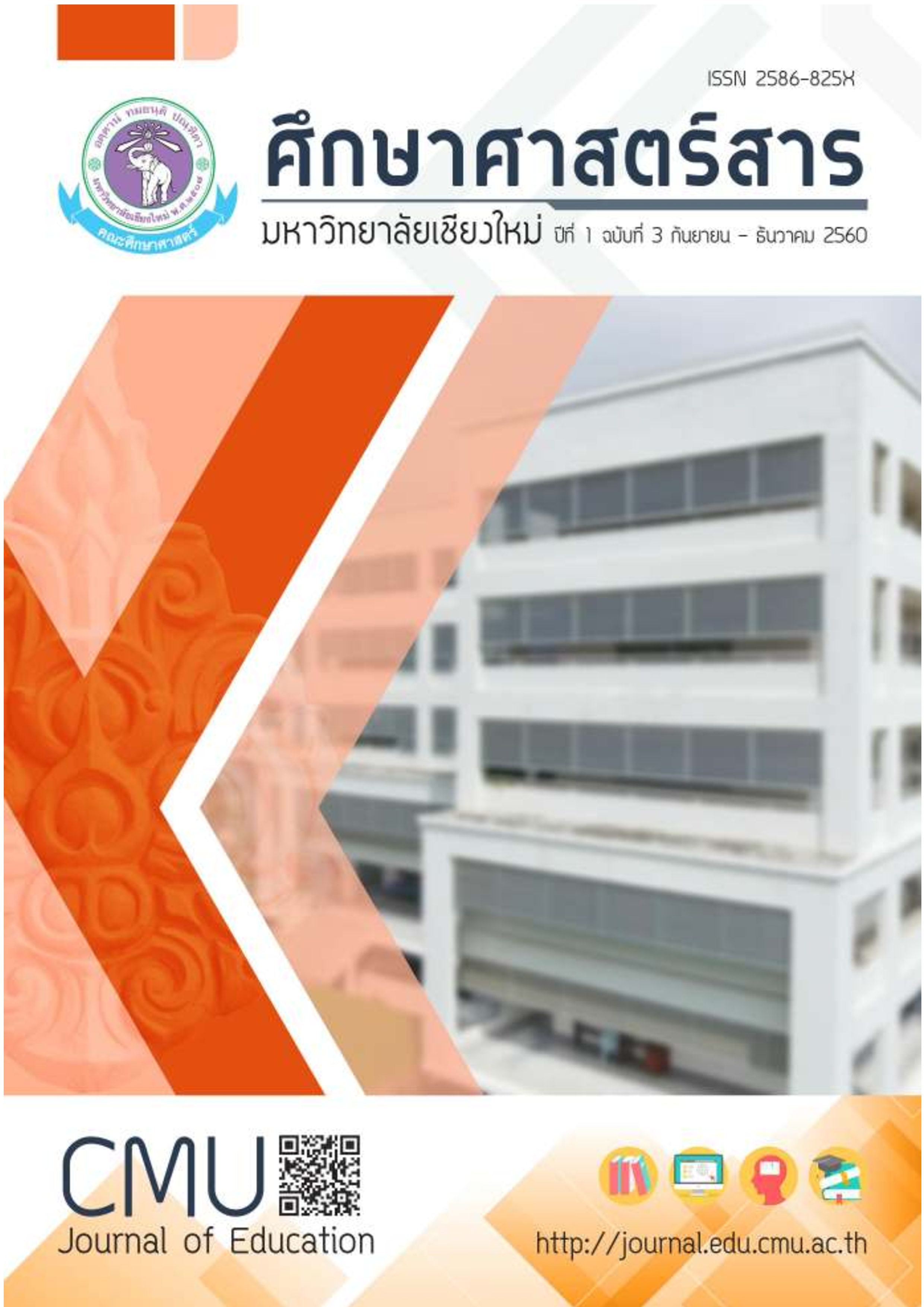An Analysis of Variation in a First Grade Mathematics Textbook: A Case Study in a Topic of Number Sense
Main Article Content
Abstract
This article presents an analysis of a first-grade mathematics textbook in a topic of number sense using variation theory. The results reveal that the textbook does not present variation in a format that allows students to discern number as a critical aspect at the beginning, but variation in other aspects that are not critical or less important. But, on perspective of variation theory, students should experience variation in numbers first, so they can discern and contrast what each number means and how each number differs from the others. This article proposes that variation should be a criterion in developing, evaluating, choosing, and using textbooks. This article also suggests for variation analyses in other topics as well as research on effectiveness of variation sequences that appear in textbooks on student learning of mathematics.
Article Details
หากผู้เสนอบทความมีความจำเป็นเร่งด่วนในการตีพิมพ์โปรดส่งลงตีพิมพ์ในวารสารฉบับอื่นแทน โดยกองบรรณาธิการจะไม่รับบทความหากผู้เสนอบทความไม่ปฏิบัติตามเงื่อนไขและขั้นตอนที่กำหนดอย่างเคร่งครัด ข้อมูลของเนื้อหาในบทความถือเป็นลิขสิทธิ์ของ Journal of Inclusive and Innovative Education คณะศึกษาศาสตร์ มหาวิทยาลัยเชียงใหม่
References
ลือชา ลดาชาติ และ ลฎาภา ลดาชาติ. (2560). ทฤษฎีความผันแปร: อีกมุมมองเกี่ยวกับการเรียนรู้. วารสารศึกษาศาสตร์สาร มหาวิทยาลัยเชียงใหม่, 1(2), 37-51.
ลือชา ลดาชาติ และ หวันบัสรี วาเด็ง. (2555). วิธีการแตกแรงของนักเรียนชั้นมัธยมศึกษาปีที่ 4: การวิจัยปรากฏการณ์ภาพ. วารสารสงขลานครินทร์ (ฉบับสังคมศาสตร์และมนุษยศาสตร์), 18(2), 193-226.
สถาบันส่งเสริมการสอนวิทยาศาสตร์และเทคโนโลยี. (2554). หนังสือเรียนรายวิชาพื้นฐาน คณิตศาสตร์ชั้นประถมศึกษาปีที่ 1. (พิมพ์ครั้งที่ 3). กรุงเทพฯ: องค์การค้าของ สกสค.
สถาบันส่งเสริมการสอนวิทยาศาสตร์และเทคโนโลยี. (2558). การศึกษาคณิตศาสตร์ในระดับโรงเรียนไทย: การพัฒนา – ผลกระทบ -ภาวะถดถอยในปัจจุบัน. เข้าถึงจาก https://library.ipst.ac.th/handle/ipst/958.
สุนีย์ คล้ายนิล. (2546). คณิตศาสตร์ไทยไม่เข้มแข็ง: เพราะอะไร (ตอนที่ 2). นิตยสาร สสวท., 31(126), 3-12.
สำนักวิชาการและมาตรฐานการศึกษา. (2553). ตัวชี้วัดและสาระการเรียนรู้แกนกลาง กลุ่มสาระการเรียนรู้คณิตศาสตร์ ตามหลักสูตรแกนกลางการศึกษาขั้นพื้นฐาน พุทธศักราช 2551. กรุงเทพฯ: โรงพิมพ์ชุมนุมสหกรณ์การเกษตรแห่งประเทศไทย จำกัด.
Cai, J. and Nie, B. (2007). Problem Solving in Chinese Mathematics Education: Research and Practice. ZDM Math Educ, 39(5), 459-473.
Gracin, D. G. and Matic, L. J. (2016). The Role of Mathematics Textbooks in Lower Secondary Education in Croatia: An Empirical Study. Math Educ, 16(2), 31-58.
Gu, L., Huang, R., and Marton, F. (2004). Teaching with Variation: A Chinese Way of Promoting Effective Mathematics Learning. In F. Lianghuo, W. Ngai-Ying, C. Jinfa, & L. Shiqi (Eds.). How Chinese Learn Mathematics: Perspectives from Insiders. (pp. 309-347). New Jersey: World Scientific.
Guo, J. and Pang, M. F. (2011). Learning a Mathematics Concept from Comparing Examples: The Importance of Variation and Prior Knowledge. Eur J Psychol Educ, 26(4), 495-525.
Krainer, K. (1993). Powerful Tasks: A Contribution to a High Level of Acting and Reflecting in Mathematics Instruction. Educ Stud Math, 24(1), 65-93.
Kullberg, A., Kempe, U. R., and Marton, F. (2017). What is Made Possible to Learn When Using the Variation Theory of Learning in Teaching Mathematics?. ZDM Math Educ, 49, 559-569.
Marton, F. (2015). Necessary Conditions of Learning. New York: Routledge Falmer.
Marton, F. and Booth, S. (1997). Learning and Awareness. New Jersey: Lawrence Erlbaum Associates.
Marton, F., Runesson, U., and Tsui, A. B. (2014). The Space of Learning. In F. Marton and A. B. M. Tsui. (Eds.). Classroom Discourse and the Space of Learning. (pp. 3-40). New Jersey: Lawrence Erlbaum Associates.
Organisation for Economic Co-operation and Development. (2016). PISA 2015: Results in Focus. Retrieved from http://www.oecd.org/pisa/pisa-2015-results-in-focus.pdf.
Pang, M. F., Marton, F., Bao, J., and Ki, W. W. (2016). Teaching to Add Three-Digit Numbers in Hong Kong and Shanghai: Illustration of Differences in the Systematic Use of Variation and Invariance. ZDM Math Educ, 48(4), 455-470.
Simon, M. A. (1995). Reconstructing Mathematics Pedagogy: From a Constructivist Perspective. J Res Math Educ, 26(2), 114-145.
Sun, X. (2011). “Variation Problems” and Their Roles in the Topic of Fraction Division in Chinese Mathematics Textbook Examples. Educ Stud Math, 76(1), 65-85.
Sun, X. (2013). The Fundamental Idea of Mathematical Task Design in China: Origin and Development. Retrieved from http://www.mathunion.org/fileadmin/ICMI/files/text_-chinese_variation_theory-final-1.pdf .
Von Glasersfeld, E. (1995). Radical Constructivism: A Way of Knowing and Learning. New York: Routledge Falmer.
Yin, R. K. (2014). Case Study Research: Design and Methods. California: SAGE Publications.


